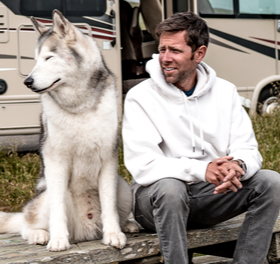What to See and Do
Hiking and Biking
Yellow Trail
The Yellow Trail meanders through diverse ecosystems, such as grasslands and forests. This trail offers visitors unique views of geological formations like sandstone cliffs.
Length: 0.54 miles
Intensity: Difficult
White Trail
The White Trail is located about 2.4 miles from Yellow Trail. Some of the recreational activities you can engage in on this trail include horseback riding, hiking, and biking.
Length: 3.09 miles
Intensity: Easy
South Rim Trail
The South Rim Trail is an out-and-back trail characterized by well-maintained paths, plenty of birdwatching spots, and climbing areas. This trail also features beautiful sceneries that allow visitors to capture awe-inspiring photographs.
Length: 5.9 miles
Intensity: Moderate
North Rim Trail
The North Rim Trail is a single-track trail that has an elevation gain of about 403 feet. This trail is particularly famous for its rock formations, making it suitable for rock climbers. It is usually open all year round.
Length: 1.4 miles
Intensity: Moderate
Fishing and Boating
About 61 miles from Yellow Trail is Dixie National Forest. The forest is known for its pristine lakes, most of which are excellent for fun water activities. Navajo Lake is one of the most popular lakes in the forest. The lake features crystal-clear blue waters and serene surroundings. Anglers can enjoy catching various fish species in Navajo Lake, including rainbow trout, brook trout, and cutthroat trout. Visitors can also swim in the lake. Other fishing spots in Dixie National Forest include Panguitch Lake, which is located in the southern part of the forest, Duck Creek Pond, Baker Reservoir, Kolob Reservoir, and Leeds Creek. You can also visit Quail Creek State Park, just outside the boundaries of Dixie National Forest, and enjoy swimming, boating, and fishing. The warm waters of Quail Creek are home to various fish species, including bass, catfish, and crappie.
Climbing
The Red Cliffs National Conservation Area is located about 9.5 miles from Yellow Trail. This area covers around 45,000 acres and is the merging point for the Colorado Plateau, the Mojave Desert, and the Great Basin. Some of the climbing spots in this area include the Black Rocks, a collection of basalt cliffs that feature overhanging walls and interesting rock faces like slabs. These cliffs allow climbers to test their skills and enjoy scenic views when they climb to the top. Visitors who are into rock climbing can also enjoy climbing the nearby Chuckwalla Wall, Turtle Wall, and Zen Wall.
Wildlife Viewing
As visitors traverse Yellow Trail, they will likely spot some fascinating wildlife creatures like Gambel's quail, a unique bird characterized by a distinctive topknot plume and intricate patterning. Black-tailed jackrabbits and small animals like western whiptail lizards are also common in the area.
You can also head to the Santa Clara River Reserve, about 7 miles from the Yellow Trail, for further wildlife viewing opportunities. This reserve has a diverse range of archeological resources and wildlife species. Some of the wild animals in the area include desert tortoises, desert bighorn sheep, mule deer, western diamondback rattlesnakes, and rare bird species like the great blue heron and the red-tailed hawk.
Picnicking
The Yellow Trail area boasts several scenic picnic spots to enhance your outdoor dining experience. Whether you prefer a shaded spot under the canopy of trees or a sunlit clearing with expansive views, there are a variety of options to suit your picnicking needs.





